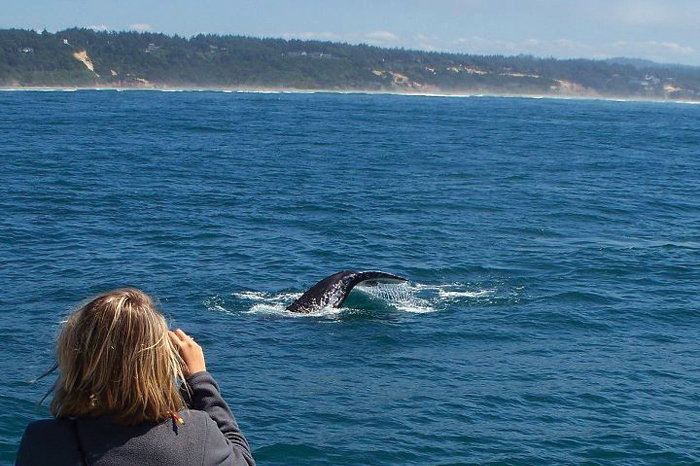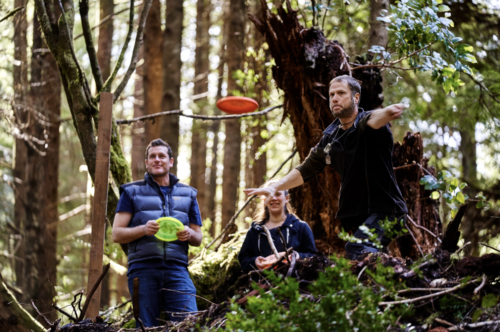
By Eileen Garvin
What is more exciting than an elegant sea mammal the size of a school bus breaching off the bow of your boat? Sorry, but we can’t think of anything better. We are absolutely enchanted by the great gray whales on the coast — the spring and winter migrators and the late-stayers of summer and fall. July through October is the best time to see whales in Oregon, but you can soak up whale culture year-round. Here’s how.
SPRING Each spring, about 19,000 gray whales make a 12,000-mile (19,312-kilometer) journey from Mexico’s Baja peninsula to the Bering Sea in Alaska. Males head out first, and pairs of mother cows and calves follow later. “We love the spring season as it welcomes the beginning of the best sightings right through October,” says Fran Mathews, co-owner of Marine Discovery Tours out of Newport. Special events and activities mark Whale Watching Week in March, hosted by Whale Watching Spoken Here, a program of Oregon Parks and Recreation.
SUMMER AND FALL From Cape Perpetua to Cascade Head, between 300 and 500 whales range along the Coast in summer and fall. Mathews says whales are generally close to shore then. “If you are a first-time boater, this is the time to go,” she says. You’ll likely see whales while enjoying warmer temps and calmer seas
WINTER Those same 19,000 swimmers who passed by in spring head south to Mexico for winter. However, with stormy weather, poor visibility and whales ranging far offshore, winter is not the time to go boating. Instead, train with Whale Watching Spoken Here to become a volunteer for spring and summer, and enjoy interesting lectures during Whale Watching Week in December. Visit the Hatfield Marine Science Center, the Oregon Coast Aquarium or the Whale Watching Center in Depoe Bay. If you are still hankering for a hunt, look for whales from one of 24 viewpoints designated by the Whale Watching Spoken Here program.
Whenever you start looking, you’re sure to be mesmerized by the great gray giants.



